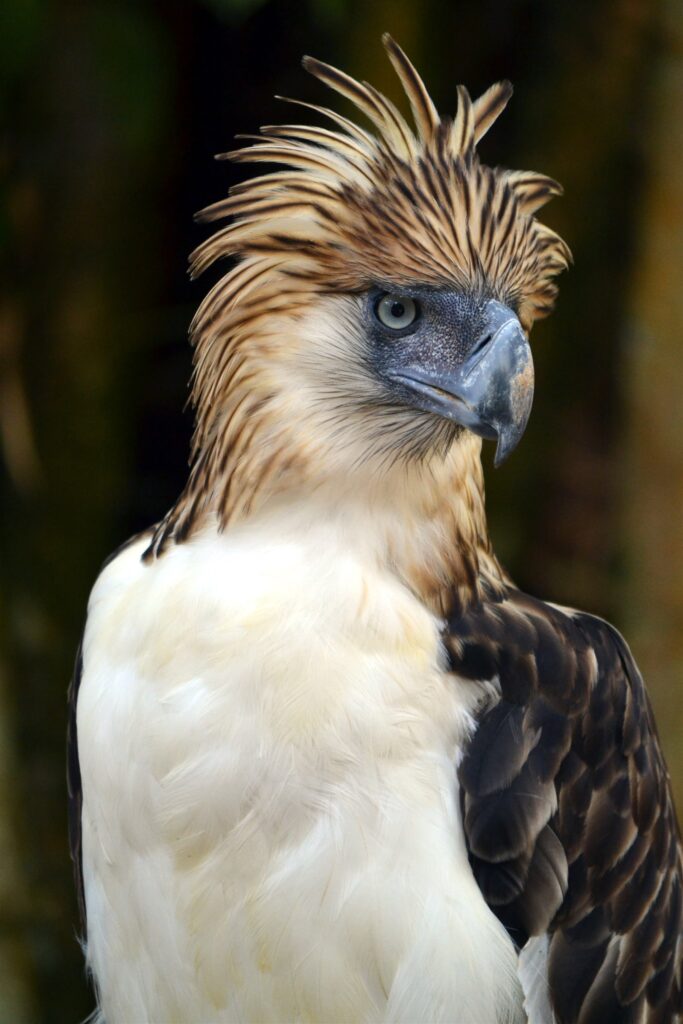JUNE 4-10: CELEBRATING PHILIPPINE EAGLE WEEK
Text and Photos by Henrylito D. Tacio
Every June 4-10 of each calendar year, the Philippines celebrates Philippine Eagle Week, in honor of the country’s bird icon. This is in accordance with Presidential Proclamation No. 79.
The Department of Environment and Natural Resources (DENR) says Proclamation No. 79 aims specifically to strengthen public awareness on the significant role of the Philippine Eagle in the forest ecosystem, and its importance as a national symbol and unique heritage, among others.

The law also intents to generate unified and concerted efforts among all sectors of the society to ensure the protection and perpetuation of the endangered species and to encourage non-government organizations, private companies or corporations, people’s organization, academic and scientific organizations and all other interested parties to participate in the annual celebration of the Philippine Eagle Week.
As the country is still battling the coronavirus disease 2019 (COVID-19) pandemic, it is fitting that this year’s theme is: “Helping the eagles survive the pandemic is helping ourselves.”

The Philippine eagle is second only to the Madagascar sea eagle in rarity. In size, it beats the American bald eagle; it is the world’s second largest – after the Harpy eagle of Central and South America.
In a feature carried by Scientific American, the country’s bird icon is described as such: “With its shaggy bronze mane and proud white chest, the Philippine eagle is about as majestic as a bird can get. Capable of growing to more than a meter long and 8 kilograms in weight, this stunning creature is the largest eagle in the world, in terms of length.”
In the past, Philippine eagles abound in the forests of Mount Apo and other parts of Mindanao. They can also be seen flying over in the forests of Sierra Madre in Luzon and Samar and Leyte in the Visayas.
Today, Philippine eagles inhabit those places but their number has dwindled. In fact, the International Union for the Conservation of Nature and Natural Resources (IUCN) has declared the Philippine eagle as an endangered species.
“One of the rarest and largest birds of prey, the majestic Philippine eagle is critically endangered,” the National Geographic pointed out.
One of the reasons why the Philippine eagles are soon to join the dodo into extinction is the destruction of its natural habitat – the tropical rainforest.
A few hundred years ago, at least 95% of the Philippines was covered by rain forest; only a few patches of open woodland and seasonal forest, mostly on Luzon, broke the expanse of moist, verdant land,” noted Dr. Lawrence R. Heaney, an American curator who holds honorary appointments at the Philippine National Museum.

By the time the Spanish arrived in the Philippines in the 16th century, scattered coastal areas had been cleared for agriculture and villages. Three hundred years later, rainforest still covered about 70% of the country.
Today, the Philippines is almost devoid of its forest cover. According to the UN Food and Agriculture Organization (FAO) 25.7% or about 7,665,000 hectares of the country’s total land area of 30 million hectares is forested. Of this, 11.2% (861,000) hectares) is classified as primary forest.
Between 1990 and 2010, the Philippines lost an average of 54,750 hectares or 0.83% annually. “Most of the (Philippines’) once rich forest are gone,” said the FAO publication, Sustainable Forest Management. “Forest recovery, through natural and artificial means, never coped with the destruction rate.”
Studies show a pair of Philippine eagles needs at least 7,000 to 13,000 hectares of forest as a nesting territory.
“Without the forest, the species cannot survive over the long term,” says Dennis Joseph I. Salvador, the executive director of the Philippine Eagle Foundation, Inc. “Without the forest, not only the Philippine eagle will go extinct, but so will the dreams and aspirations of millions of marginal income families who rely on the forest to survive.”
The Philippine eagle was formerly known as monkey-eating eagle (its generic name, Pithecophaga, comes from the Greek words pithekos or “monkey” and phagein meaning “eater”). It was later renamed the Philippine eagle under the administration of Ferdinand E. Marcos after it was learned that monkeys comprise an insignificant portion of its diet, which consists mainly of flying lemurs, civet cats, bats, rodents, and snakes.
A majestic bird, Philippine eagle stands a meter high, weighs anywhere from four to seven kilograms and has a grip three times the strength of the strongest man on earth, according to PEF.
With a wing span of nearly seven feet and a top speed of 80 kilometers per hour, the Philippine eagle can gracefully swoop down on an unsuspecting prey and carry it off without breaking flight.
Efforts to save the Philippine eagle were started in 1965 by Jesus A. Alvarez, then director of the autonomous Parks and Wildlife Office, and Dioscoro S. Rabor, another founding father of Philippine conservation efforts. Charles Lindbergh spearheaded a drive to save the bird from 1969 to 1972.

In July 1995, then President Fidel V. Ramos signed Proclamation No. 615 naming the Philippine eagle as the country’s national bird. He said that the eagle is found only in the Philippines and as such should be a source of national pride.
“If the national bird dies,” Ramos said at that time, “so will all the country’s efforts at conserving its natural resources and treasures.”
“The Philippine eagle is the largest predator we have,” said Salvador, who was named one of the outstanding young men (TOYM) in 2000 for leadership in wildlife conservation. “By using the Philippine eagle as the focal point of conservation, we are, in the process, saving wildlife and their habitat.”
The Philippine Eagle Center is located in a far-flung area in Malagos of Calinan District in Davao City. It takes almost an hour to travel from the heart of the city to the center where visitors get to encounter Philippine eagles placed in cages.
Primarily a research facility, the Philippine Eagle Center is nestled at the rolling foothills of Mount Apo, the country’s highest peak. Several Philippine eagles have been raised as part of the foundation’s breeding program. Most of them are being induced to breed in captivity.

